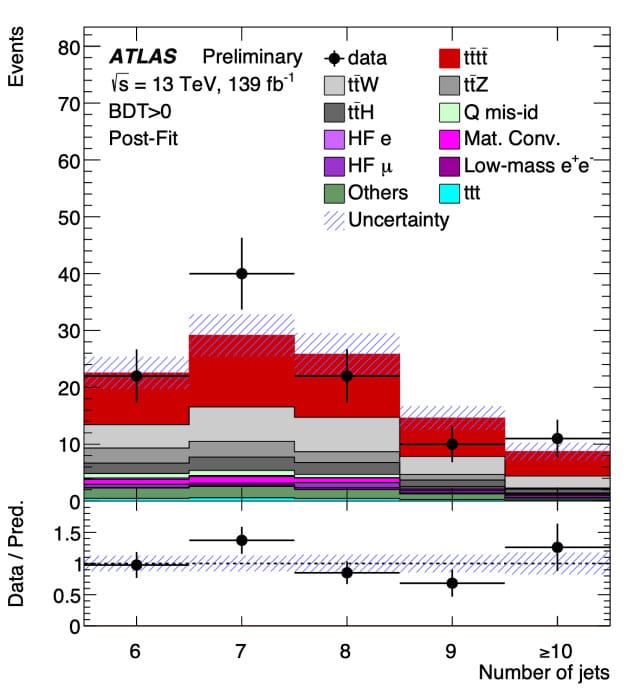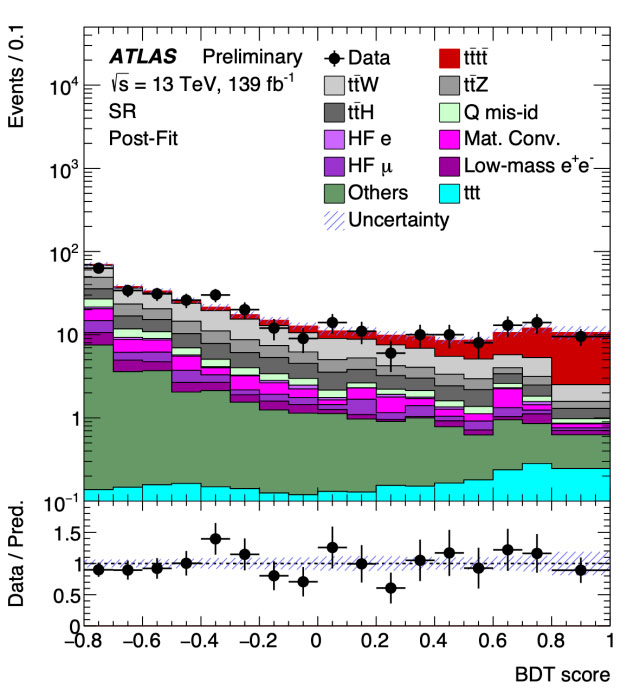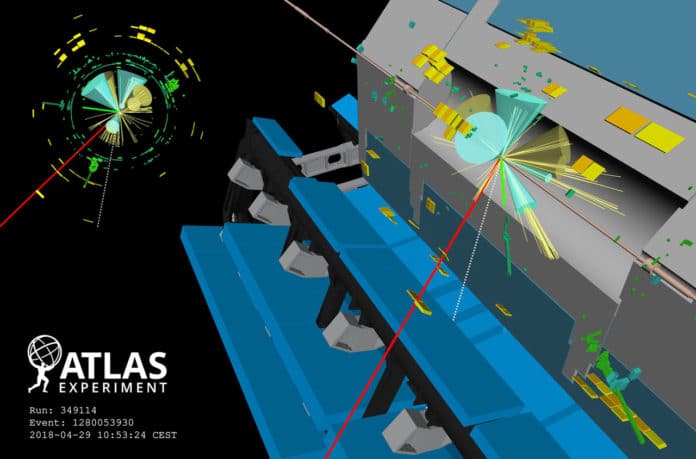The top quark is the most massive known fundamental particle to date (PDG). Its mass is 173 GeV/c2. But contrary to gold, whose mass is mostly due to the nuclear binding force, the top quark gets all its mass from the interaction with the Higgs field. So when four top quarks are produced in a single event, they create the most massive particle final state ever seen at the LHC, with almost 700 GeV in total.
This is a perfect situation to scan for new physics with yet obscure particles adding to the process. Should they exist, physicists will see new creation of four top quarks above what is anticipated by the Standard Model, further rousing a point by point investigation of the procedure.
In their new research, ATLAS Collaboration at CERN has announced strong evidence of the production of four top quarks. ATLAS physicists studied the full Run 2 dataset recorded between 2015 and 2018.
When produced through proton-proton collisions at the LHC, this process leaves spectacular signatures in the ATLAS detector. The four top quarks produce four W bosons and four jets—collimated sprays of particles—originating from bottom quarks. The W bosons then, in turn, each decay into two jets or one charged lepton (electron, muon or tau leptons) and an invisible neutrino. As a final step, the tau leptons decay into a lighter lepton or a jet, with additional neutrinos.
For this outcome, physicists decided to concentrate on collision events creating two leptons with the same charge or three leptons. Notwithstanding representing just 12% of all the four-top-quark decays, these signatures are simpler to recognize from background processes in the ATLAS detector. Recognizing a signal, in any case, required a detailed understanding of the remaining background processes and the use of sophisticated separation techniques.

Using various features of the signal, including the high numbers of jets, their quark-flavor origin (bottom quark or not), and the energies and angular distributions of the measured particles, physicists trained a multivariate discriminant (boosted decision tree). The main background processes that resemble the signal stem from the production of a pair of top quarks in association with other particles, such as a W or Z boson, a Higgs boson, or another top quark. Some of these processes have themselves only recently been observed by the ATLAS and CMS Collaborations.
Each background procedure was separately assessed, fundamentally through dedicated simulations that included information from the best available theoretical forecasts.

The most challenging background processes—the top-quark-pair production with a W boson and backgrounds with fake leptons—had to be determined using data from dedicated control regions. Fake leptons arise when the charge of a lepton is misidentified, or when leptons come from a different process but are attributed to the signal. Both had to be well-understood and precisely evaluated to reduce the systematic uncertainty on the final result.
ATLAS measured the cross-section for the production of four top quarks to be 24 +7–6 fb, which is consistent with the Standard Model prediction (12 fb) at 1.7 standard deviations. The signal significance amounts to 4.3 standard deviations, for an expected significance of 2.4 standard deviations were the four-top-quark signal equal to the Standard Model prediction. The measurement provides strong evidence for this process.
